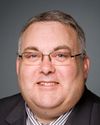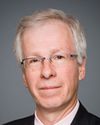But in essence, the estimates are through the rear-view mirror, if you like, because you're always dealing with data from the past. There is no consultation in the estimates about projecting future growth.
The reason I am asking is because obviously the Fair Representation Act governs us for the next 10 years. We don't adjust annually. We can't adjust for the midway point massive migrations to one region of the country or another.
Can you envision ways whereby the estimates could actually be more prospective? I know there is no certainty. I don't know where you would find that statistical halfway point, but are there mechanisms you would like to suggest we look at so that the 10-year period actually doesn't end up with the huge discrepancies that we now so often find ourselves with?





